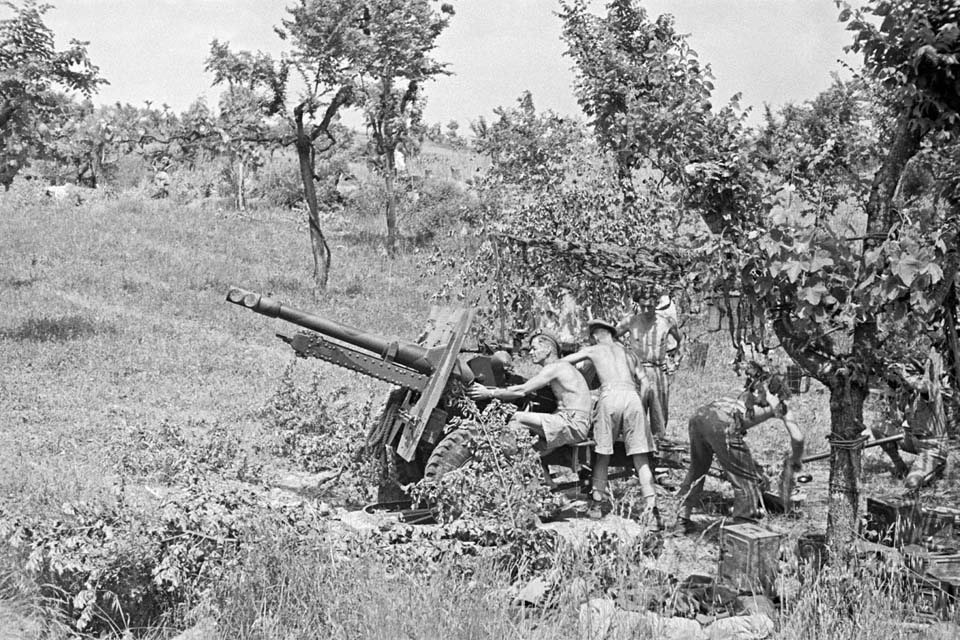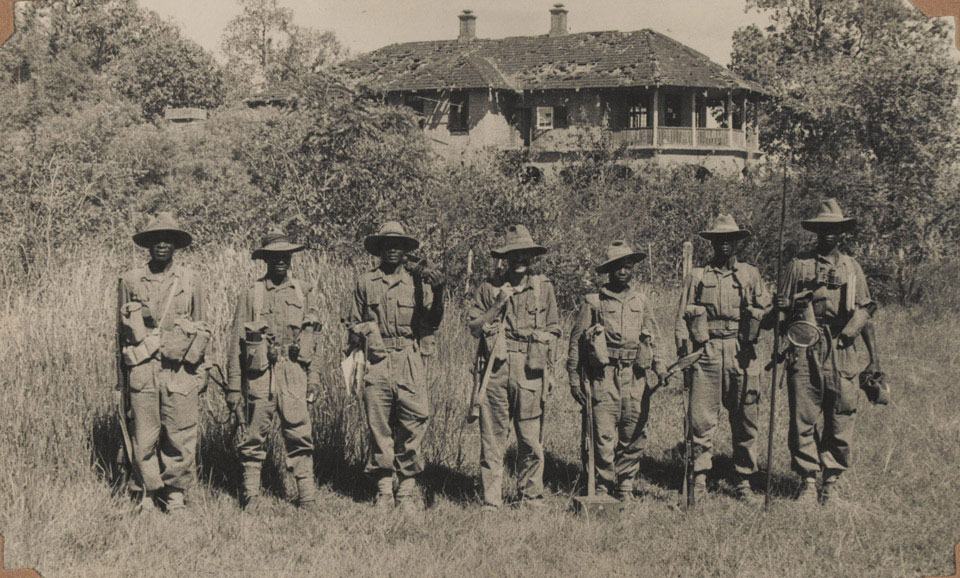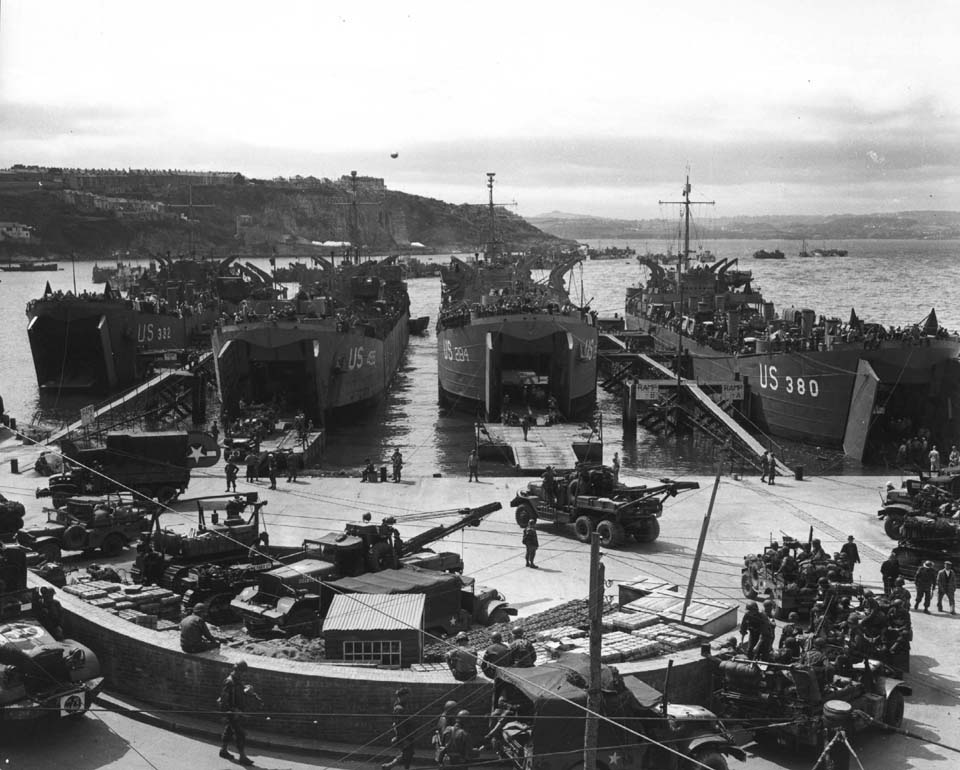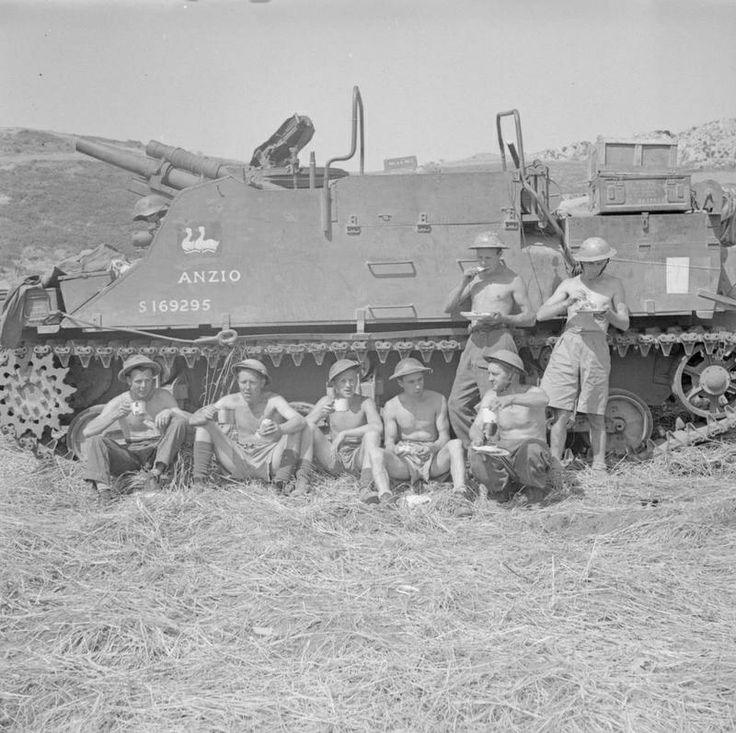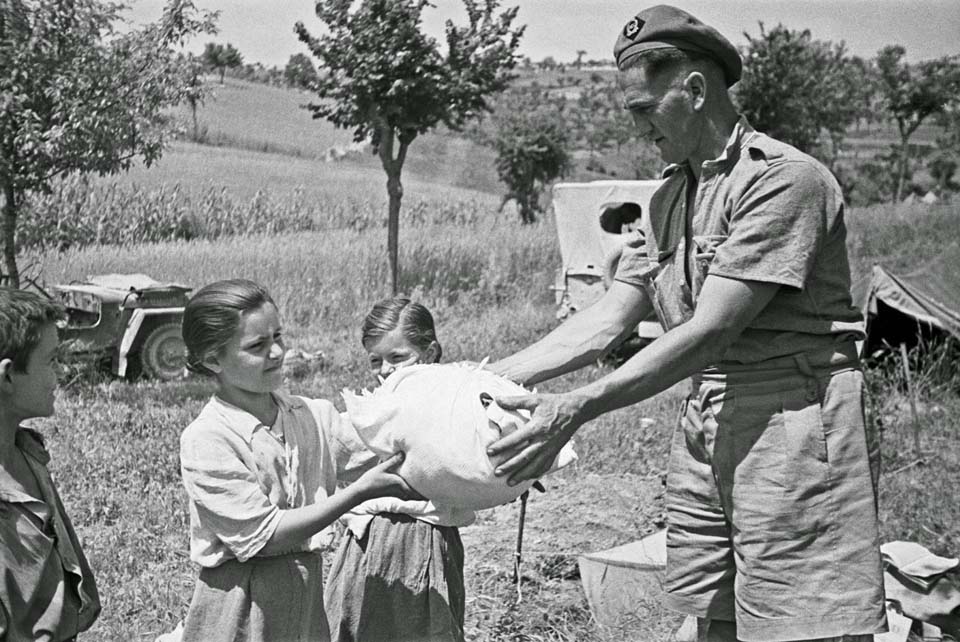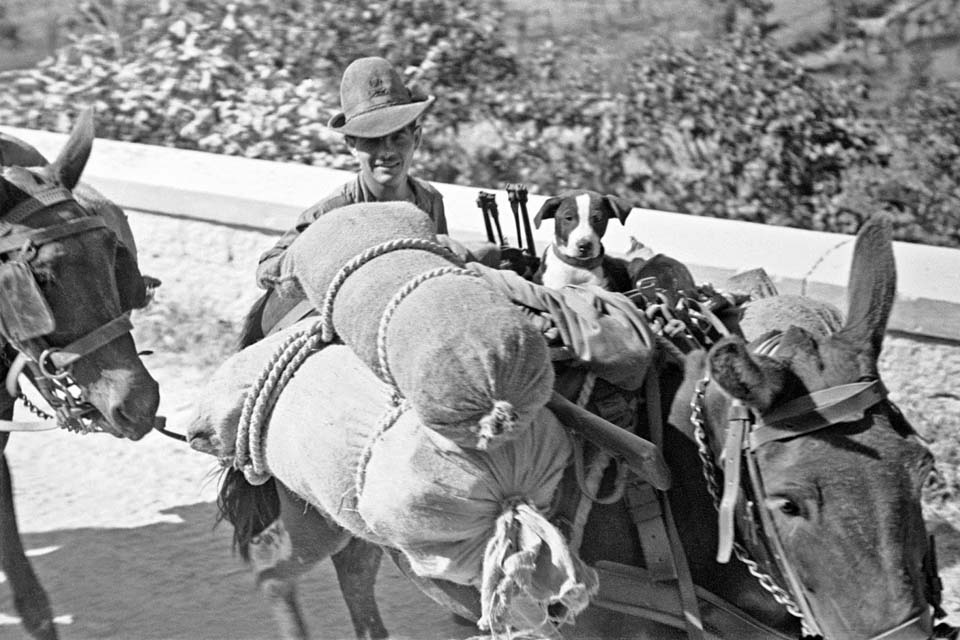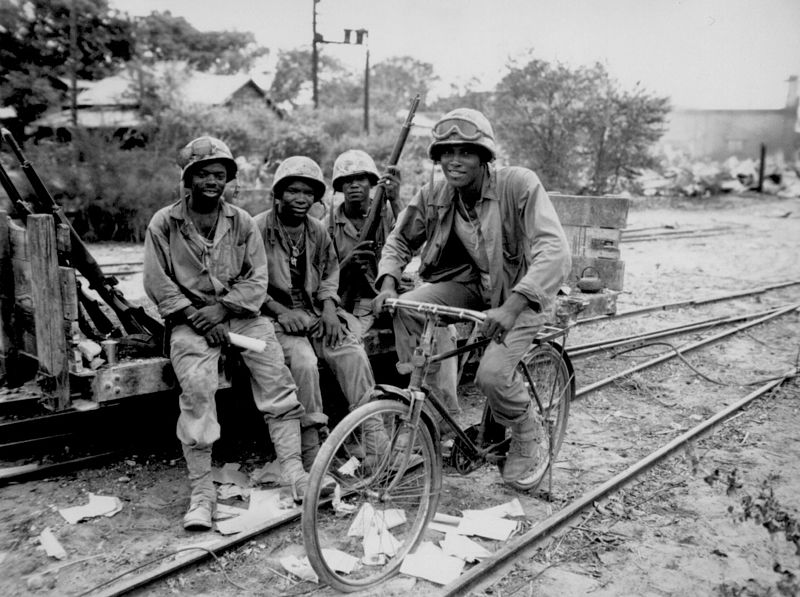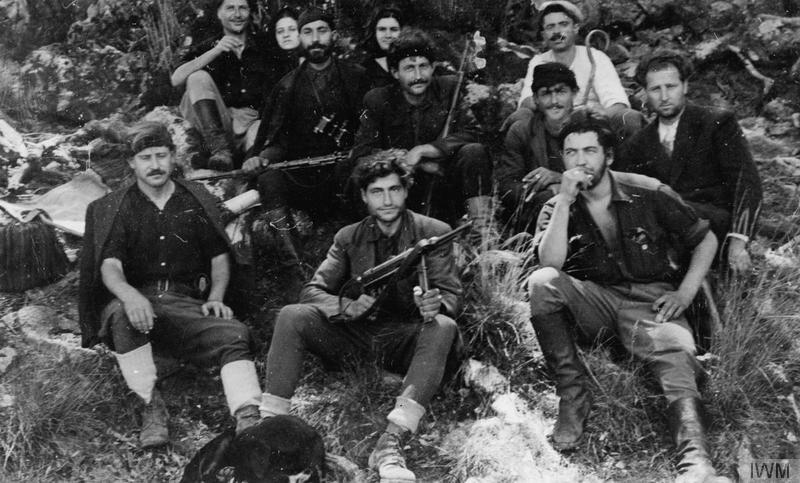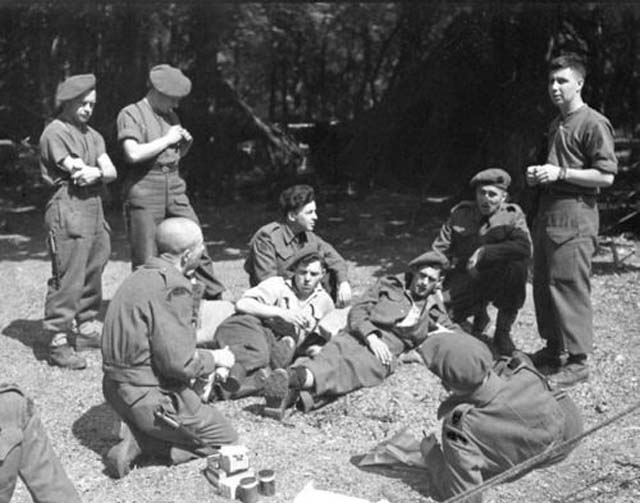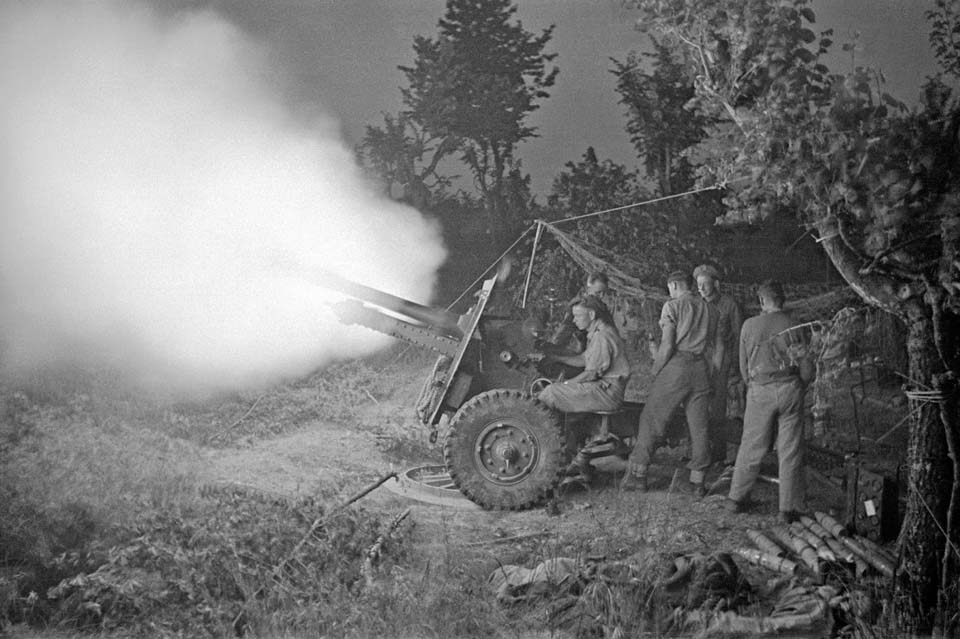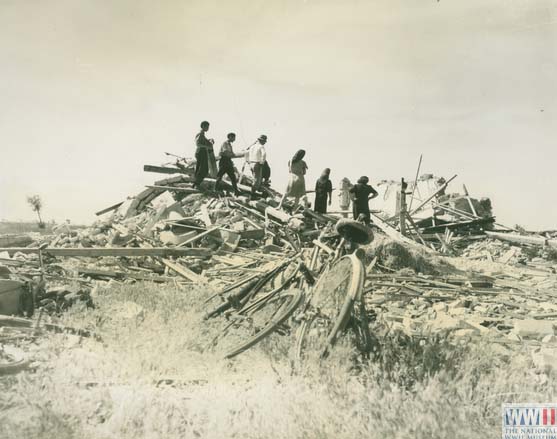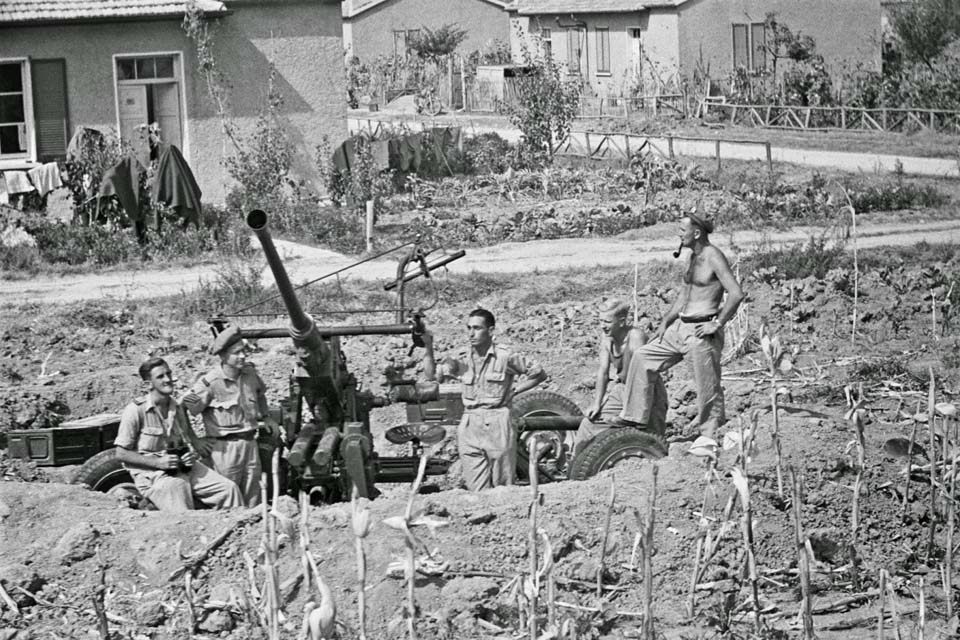Air Operations, Carolines
Due to bad weather, only 6 of 48 XIII Bomber Command B-24s sent are able to attack the Truk Atoll.
[Air Operations, CBI
BURMA- 7 10th Air Force B-25s attack Bongyaung, Songon, and targets on the road between Tiddim and Imphal.
- 19 P-40s attack targets around Myitkyina.
- USAAF transports complete a frantic six-day effort to airlift supplies, US and Chinese army ground troops, and 2 US Army engineer battalions to hold the airfield and town at Myitkyina.
- 25 14th Air Force fighter-bombers attack rail facilities at Chenghsien.
- 18 fighter-bombers attack port facilities, a Japanese Navy gunboat, and barracks near Chiuchiang, and 300 Japanese Army ground troops at Sanyenchiao.
- 23rd Fighter Group and 3rd CACW Fighter Group P-40s down a trainer and a transport in the course of 3 minor aerial skirmishes between 1020 and 1800 hours.
- More than 20 10th Air Force B-25s airlift ammunition to Allied ground forces at Imphal.
Air Operations, East Indies
380th Heavy Bomb Group B-24s attack Amboina, Boroe, and the Kai Islands.
[Air Operations, Europe
RAF BOMBER COMMANDEvening Ops:
- 101 Halifaxes of No. 1 Group and 8 Pathfinder Mosquitos attack the main German radio-listening station at Ferme d'Urville near the coast chosen for the invasion, but clouds and haze prevent an accurate bombing. There are no losses.
- 58 Lancasters of No. 5 Group hit the railway junction at Saumur. Photographic reconnaissance shows severe damage to the junction.
- There are no aircraft losses.
- 6 Mosquitos are sent to Aarhus, Denmark, 18 aircraft lay mines in the Kattegat and off Dunkirk, 40 aircraft are on Resistance operations, and there are 3 Serrate patrols.
- 1 Halifax is lost on a Resistance operation.
- 'G' Force Air HQ' is formed at Bari, Italy. It will be renamed the Balkan Air Force on June 7.
FRANCE:
- Nearly 100 IX Bomber Command B-26s attack airdromes and coastal defense batteries from the Belgian frontier to the Cherbourg peninsula.
ITALY:
- All 12th Air Force conbat sorties are devoted to direct support of advancing ground forces. Troop positions, lines of communications, rail and road targets, motor vehicles, and numerous other targets are bombed and strafed throughout the day.
Air Operations, New Guinea
- 36 B-25s and A-20s attack Noemfoor Island, Ransiki, and in the Kaukenau area.
- B-25, A-20s, and V Fighter Command P-39s attack various targets between Hollandia and the Wakde Islands.
- 5th Air Force and RAAF aircraft attack various targets between Hansa Bay and Wewak.
Allied Planning
Gen Eisenhower and his staff begin meeting daily to work out last-minute details and receive weather updates. On this day in England sit 10 armored divisions and 48 infantry divisions, a total of 1.5 million men and 16 million tons of supplies. There are 4,200 tanks, 13,700 vehicles, and 3,500 artillery pieces assembled and waiting for the order that will send them off to participate in one of the greatest events in history.
[CBI
BURMAOn the northern front the Chinese 22nd Division overcomes Japanese resistance and cuts the Kamaing road, in the Mogaung valley, at several places southeast of Nanyaseik above Kamaing. Since the Chinese 38th Division is already blocking the road at Seton, below Kamaing, there is a serious threat to the garrison in that town, but monsoon rainfall is slowing operations. American reinforcements are sent urgently to the Myitkyina area. 2 engineer battalions, GALAHAD replacements, and GALAHAD evacuees have arrived by air between 26 May and 1 June. The Allied supply situation in the area is difficult for the American have rations for only 24 hours, the Chinese for 2 days. Chinese attacks make little progress. The US 236th Engineer Battalion pushes toward Namkwi with the dual purpose of clearing that region and of gaining combat experience. The attack fails, although some elements succeed in reaching their objective.
On the Salween front, element of the Chinese 2nd Reserve and 36th Divisions (54th Army) reach the Shweli valley from Tatangtzu Pass and join the 593rd Regiment, Chinese 198th Division, from Mamien Pass. The Japanese withdraw some units from the upper Shweli valley to reinforce the line at Lung-ling farther south. 2 regiments of the Chinese 9th Division, Chinese 2nd Army, cross the Salween. The 76th Division of the same army patrols toward the Burma Road. After hesitating so long, Chiang Kai-shek has finally decided to send adequate forces to Burma.
INDIAThe Japanese 31st Division at Kohima begins to withdraw, signalling the final end of the U-GO offensive into India. The collapse begins when the 7th Indian Division overruns Japanese positions in Naga village before the 5th Brigade outflanks the the Japanese around Aradura Spur 2 days later. Although the Japanese have been militarily defeated, lack of supplies is also a major catalyst for the withdrawal.
[Eastern Front
Although the German pressure near Jassy is maintained, Russian counterattacks are now succeeding in re-taking and holding the disputed ground.
[Germany, Command
The German Army's military intelligence unit, the Abwehr, is removed from the control of the Wehrmacht by Hitler. Its chief, Adm Canaris, is dismissed and all secret service activities are places in the hands of Heinrich Himmler, the SS leader. Canaris had been clandestinely conspiring against Hitler.
[Italy
The German 14th Army is still holding out both in the Albano sector and near Lanuvio. South of the Alban Hills the 141st Infantry Regiment of the US 36th Division takes Velletri after a hard struggle. Exploiting the success of 36th Division, the US II and VI Corps begin to drive toward Rome at full strength attacking through the Alban Hills and toward Albano and Valmonte on either side. On the left flank the 85th Division attacks Monte Ceraso, meeting strong resistance. Since the Caesar Line has now been breached by these advances, Kesselring orders a fighting withdrawal to the Gothic Line, north of Rome. This fortified line crosses Italy from the Ligurian Sea, between La Spezia and Viareggio, as far as the Adriatic, just above Pesaro, passing north of Lucca and Pistoia and then turning south of San Marino before finally continuing nortward to Pesaro. The German forces still fight skillfully to delay the Americans, however.[MORE]
[Mediterranean
A German supply convoy bound for Crete from the Greek mainland is heavily attacked by RAF planes and several ships sunk. After this the Germans only sail occasional ships to the island.
[New Guinea
On Biak, TF HURRICANE begins and offensive to break out of their beleagured beachhead. The 163rd Infantry Regiment remains to man the beachhead, while the 186th, supported by artillery and tanks, moves north toward an airstrip on an inland plateau in the center of the island, repulsing several vigorous Japanese counterattacks from north and south. Units of the 162nd Infantry move out from another small beachhead across the jungle toward the central plateau to join up with the 186th Regiment. The Japanese cut the main coast road.
Naval and engineer units explore 3 islands of the Paidado group--Mios Woendi, Aoeki, and Owi.
In the Hollandia-Aitape area, ALAMO Force gives Gen Patrick permission to keep the rest of the 163rd Infantry until the arrival of a 6th Division detachment. Around Aitape on the mainland the Japanese are still attacking and forcing the American 1st Battalion of the 126th Infantry to contract their beachhead.
[Operation OVERLORD
The first code message, giving a general warning to the French Resistance that invasion is imminent, is transmitted by the BBC in the evening. At 9:00p.m. the radio monitoring post at the headquarters of the German 15th Army picks up, after the BBC news bulletin, a 'personal message' - the first verse of the Chanson d'Automne by the French poet Paul Verlaine: 'les sanglots longs | Des violons | De l'automne' . . .('The long sighing of the violins of autumn . . .'). Canaris, head of the German secret service, has told headquarters that this verse is the first part of a message that will be transmitted on the first and fifteenth days of the month to give the French Resistance advance warning of the invasion. The second part of the message, the second half of Verlaine's verse, will be transmitted within 48 hours of the start of the landing.
[Pacific
- The US submarine Herring (SS-233) continues attacking Japanese shipping in the Kurils sinking the transport Iwaki Maru (3124t) and the merchant cargo ship Hiburi Maru (4365t), but is sunk by a shore battery of the Guards Division 52, Matsuwa Detachment.
- The US submarine Pintado (SS-387) sinks the Japanese transport Toho Maru (4716t) about 250 miles northwest of Saipan and damages the transport Kinshu Maru. [
Secret War
Colossus, an all-electronic Enigma deciphering machine become operational at Bletchley Park.
[Images from June 1, 1944
|
|
|
|
|
|
|
|
|
|
|
|
